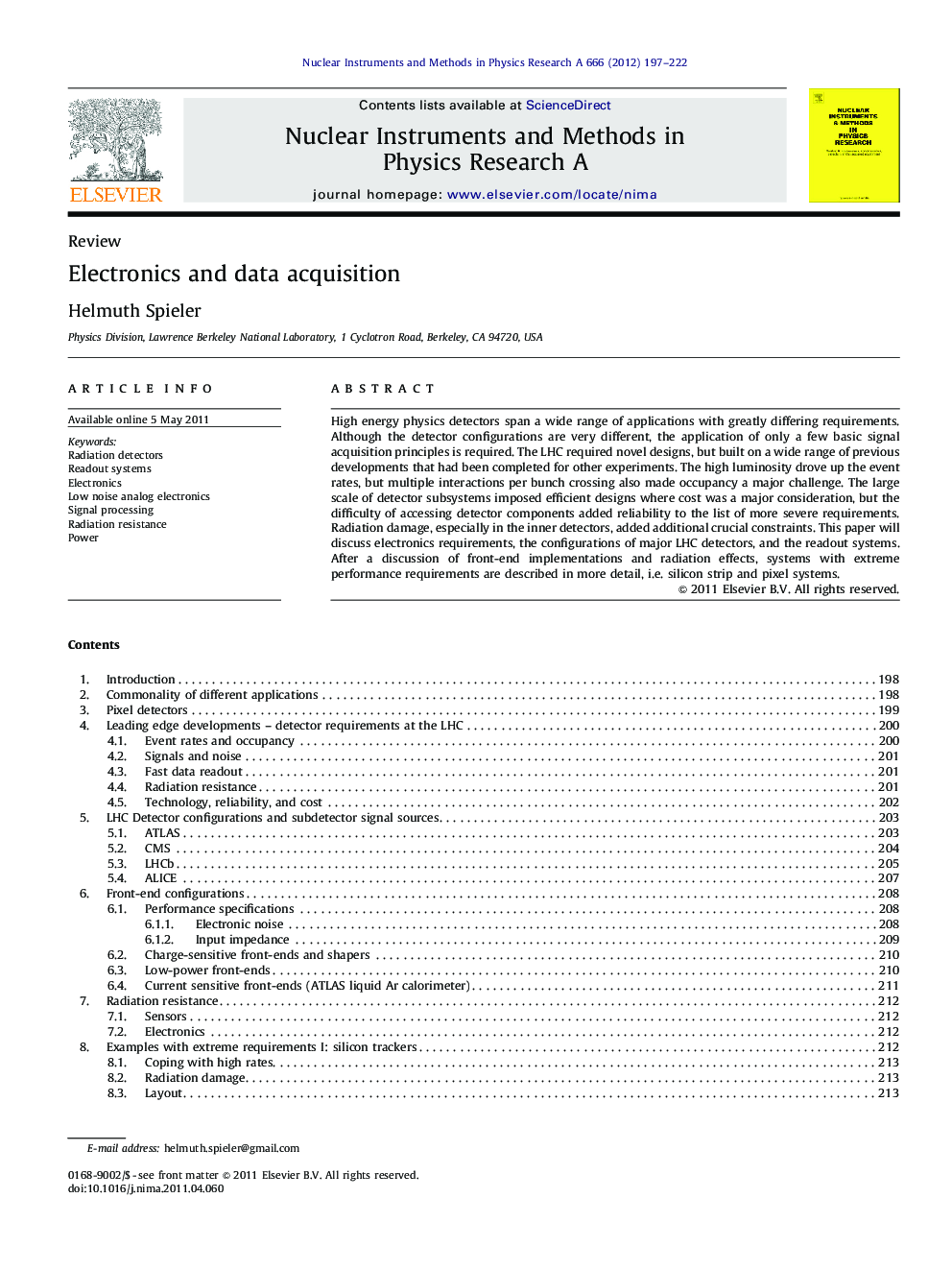| Article ID | Journal | Published Year | Pages | File Type |
|---|---|---|---|---|
| 1824113 | Nuclear Instruments and Methods in Physics Research Section A: Accelerators, Spectrometers, Detectors and Associated Equipment | 2012 | 26 Pages |
Abstract
High energy physics detectors span a wide range of applications with greatly differing requirements. Although the detector configurations are very different, the application of only a few basic signal acquisition principles is required. The LHC required novel designs, but built on a wide range of previous developments that had been completed for other experiments. The high luminosity drove up the event rates, but multiple interactions per bunch crossing also made occupancy a major challenge. The large scale of detector subsystems imposed efficient designs where cost was a major consideration, but the difficulty of accessing detector components added reliability to the list of more severe requirements. Radiation damage, especially in the inner detectors, added additional crucial constraints. This paper will discuss electronics requirements, the configurations of major LHC detectors, and the readout systems. After a discussion of front-end implementations and radiation effects, systems with extreme performance requirements are described in more detail, i.e. silicon strip and pixel systems.
Related Topics
Physical Sciences and Engineering
Physics and Astronomy
Instrumentation
Authors
Helmuth Spieler,
